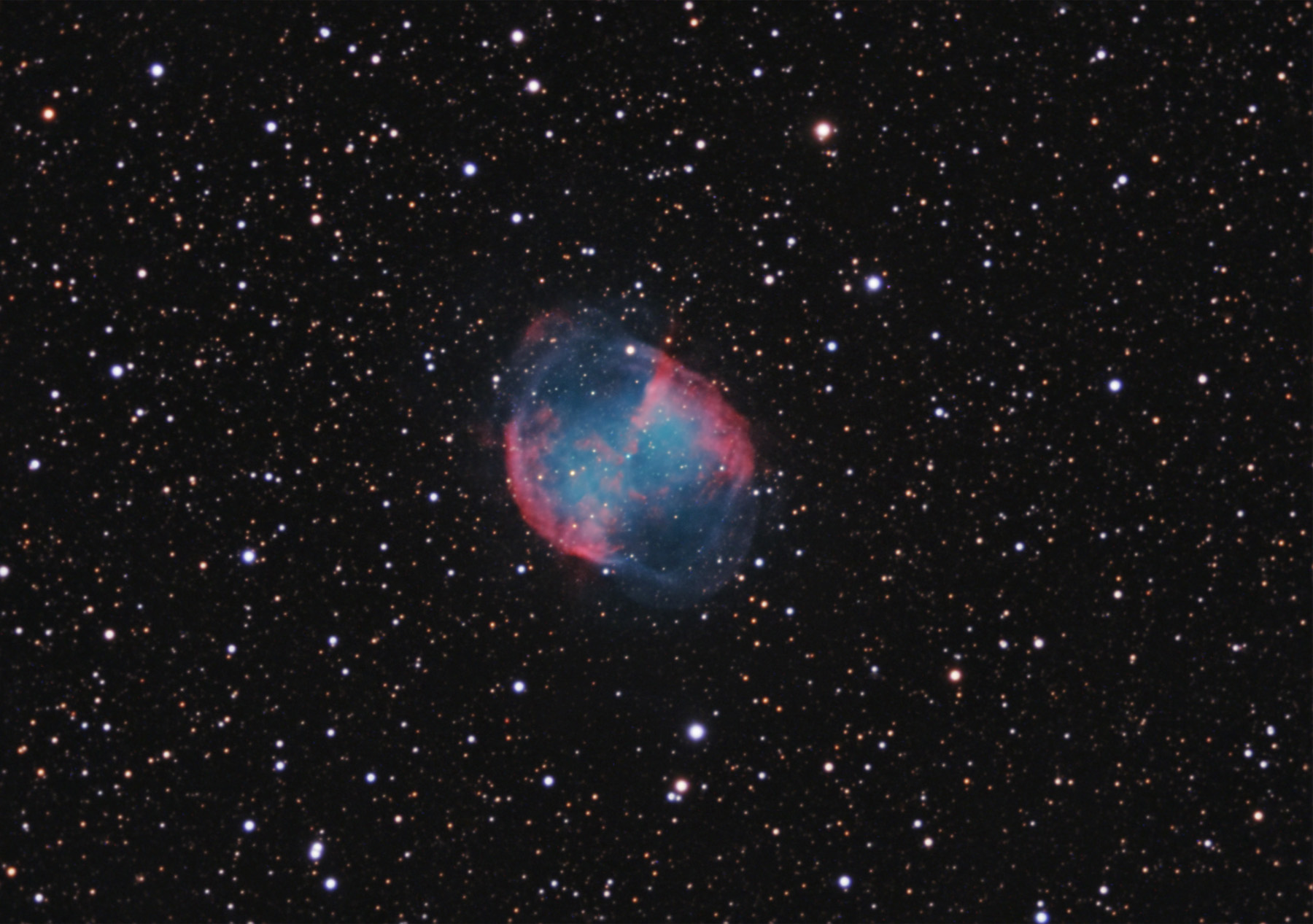
| HOME |
M 27
Planetary Nebula in Vulpecula
(ra: 19:59.6 / dec 22:43)

June 2011, Laguna de Todos los Santos, 25 de Mayo
Buenos Aires, Argentina
DATA
TYPE: Planetary Nebula
VISUAL BRIGHTNESS: 7.4
SIZE: 8 X 5.7 arcs minutes
DISTANCE: 1.25 k light years
OBJECT DESCRIPTION AND IMAGE SESSION
The object was too low in the horizon where also some light pollution of a 40 km away town washed the transparency of the sky in that particular area.
IMAGE INFORMATION
SCOPE: Celestron SCT 8" working in f6.3
MOUNT: Sky Watcher HEQ6
SKY CONDITIONS: Rural Skies - good
CAMERAS: QSI 583 WS -10Cº
FILTERS: Baader 31 mm LRGB
EXPOSURES: LHaRGB (30,20,20,20,20) RGB bin 2x2
GUIDING: William Optics ZenithStar 66 f6. Starlight Xpress Lodestar Camera. AA 3.71 Control Camera Plug-in
PROCESSING: Images Plus (Sigma Median Combination) CCD Sharp Richardson Lucy Deconvolution NASA Photoshop Fits Liberator, Photoshop CS